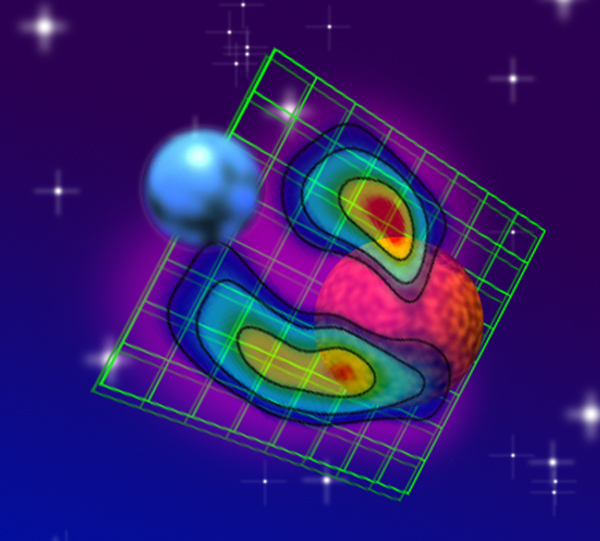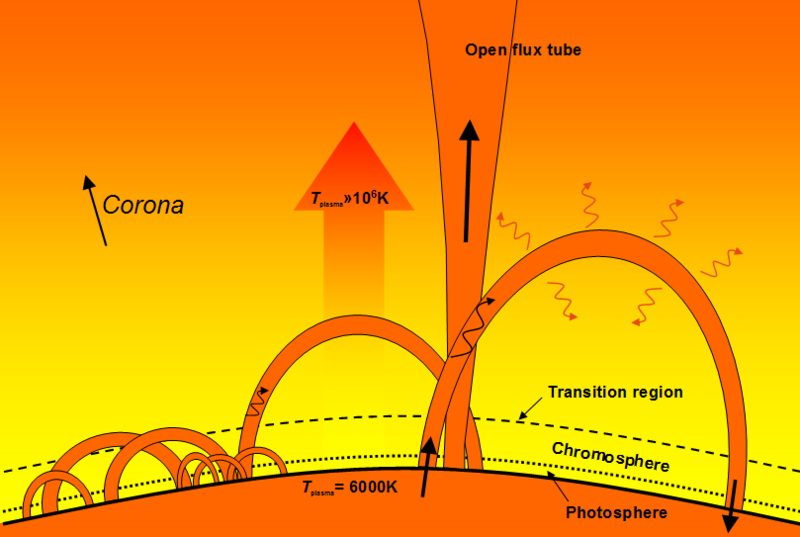This famous variable star's name derives from Arabic Ras al Ghul (meaning "head of the demon") so Algol is often called the Winking Demon Star. Algol's 68.75 hour wink, discernible by the naked eye, exhibits an extra dimming blink, probably caused by a third star orbiting very close to Algol's second star companion, making this a triple-star system.

Artist's conception of Algol's coronal loop, by Peterson et al., NRAO/AUI/NSF
Iowa University radio astronomer Robert Mutel and graduate student William Peterson and their colleagues used 13 computer-linked radio telescopes, high resolution radio interferometery and careful comparison of radio and optical coordinates to capture the data from Algol and pin down the first non-fuzzy images this distant phenomenon, reads the (Jan. 13, 2010) UI press release.
The artist's conception of the Algol star system (above), showing a radio image superimposed on a grid, is what stirred up my wondering today. I am amid further reading about this impressive star.

Caronal loop cartoon produced by Dr. Ian O'Neill, via Wikimedia Commons
More knowlege about the space weather around Earth, brought about by radiation and magnetic fields interacting, can be learned from the UI team's new research.
Next, I will study the relatively close-up coronal loops that happen at our Sun.





Comments